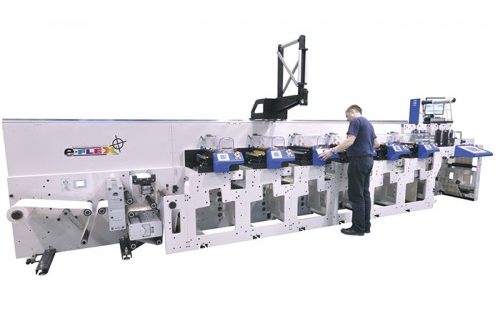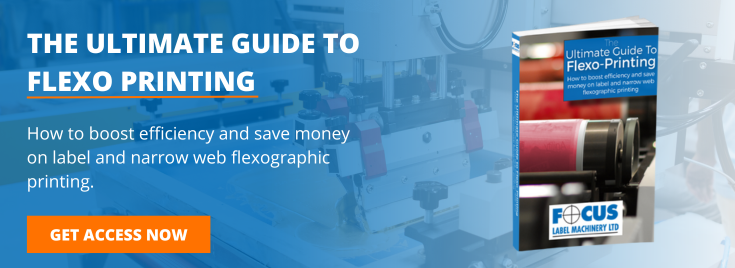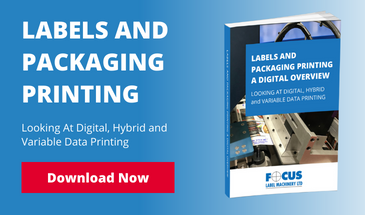
Flexographic printing is capable of achieving high-quality printed images at high production speeds, making it a popular choice in the food packaging, textiles and label printing industries, especially for longer print runs.
Flexographic (Flexo) printing has much in common with other forms of rotary printing, but with added versatility due to the ability to hybridise Flexo presses with new digital technologies to boost productivity and reduce costs.
The Flexo process has been developed over many, many years and has remained stubbornly popular across a broad spectrum of printing sectors. It is versatile, uses quick-drying ink, and is suitable for a wide range of substrate materials. This article will help you understand how the printing process is carried out.
Printing Plates
In order to understand the flexo print process, we first need to understand how the printing plates are made.
The required image is first exposed onto a film negative, using a laser imagesetter, or directly onto the plate (with a pre-laminated negative mask), using Computer to Plate (CTP) technology. The plate and film are then exposed to UV light in order to fix the image into the polymer material. Only the transparent areas of the negative film/laminated mask will allow the UV light to pass through, enabling the UV rays to alter the molecular bonding in the photopolymer material. After the sufficient exposure time, the plate is then ready for the washout process. The washout solution can be water or solvent, depending on the type of plate material. The unexposed areas of the polymer are then washed away from the plate base, via a washout brush. The waste polymer is dissolved into the washout solution, which is then later processed for recycling/solvent reclamation.
Following the washout process, the plate is then placed in a hot air dryer, where excess water/solvent evaporates, leaving a dry plate. A post-cure is then required, using both UVA & UVC lamps, after which the finished plate is ready for use.
Printing Process
The printing plates are mounted onto cylindrical plate rollers, which are then loaded into the flexo press, with each required colour positioned in successive print stations. As each roller rotates, the plate collects ink from the inking roller (anilox roll) and then transfers the inked image onto the substrate. The wet ink then passes through a dryer, before the next colour is printed.
The substrate is fed into the press in roll form, from the unwind station. The tension of the material is carefully monitored and controlled to ensure that all colours are printed in register. Any in-line embellishment or converting is then carried out, prior to rewinding or sheeting.
Versatile Inks
Flexo inks need to be fast drying and are generally water-based, solvent-based, or UV cured. The type of work, length of run and often substrate type would determine the optimum ink type. The flexo process enables the use of a range of different ink viscosities, allowing specialist inks to be used for applications such as security print, light-fast outdoor labelling, fluorescent & metallic effects, etc.
There is also the availability of food-grade ink for food packages and environmentally friendly inks.
Advances In Flexo Printing
Thanks to advances in technology, flexographic printing process has evolved into a highly efficient print process, producing the highest quality of printing. Flexo is versatile and consistent, providing quality print and reliable repeatability. This type of printing can be seen almost everywhere from supermarket shelves to shopping bags, tickets, tags and many other applications.
To get the best out of flexographic printing, you need to understand the process systematically. You can read more about the background and current state of Flexo printing technology in our free e-book: The Ultimate Guide To Flexo Printing. Download a copy today by clicking here.







